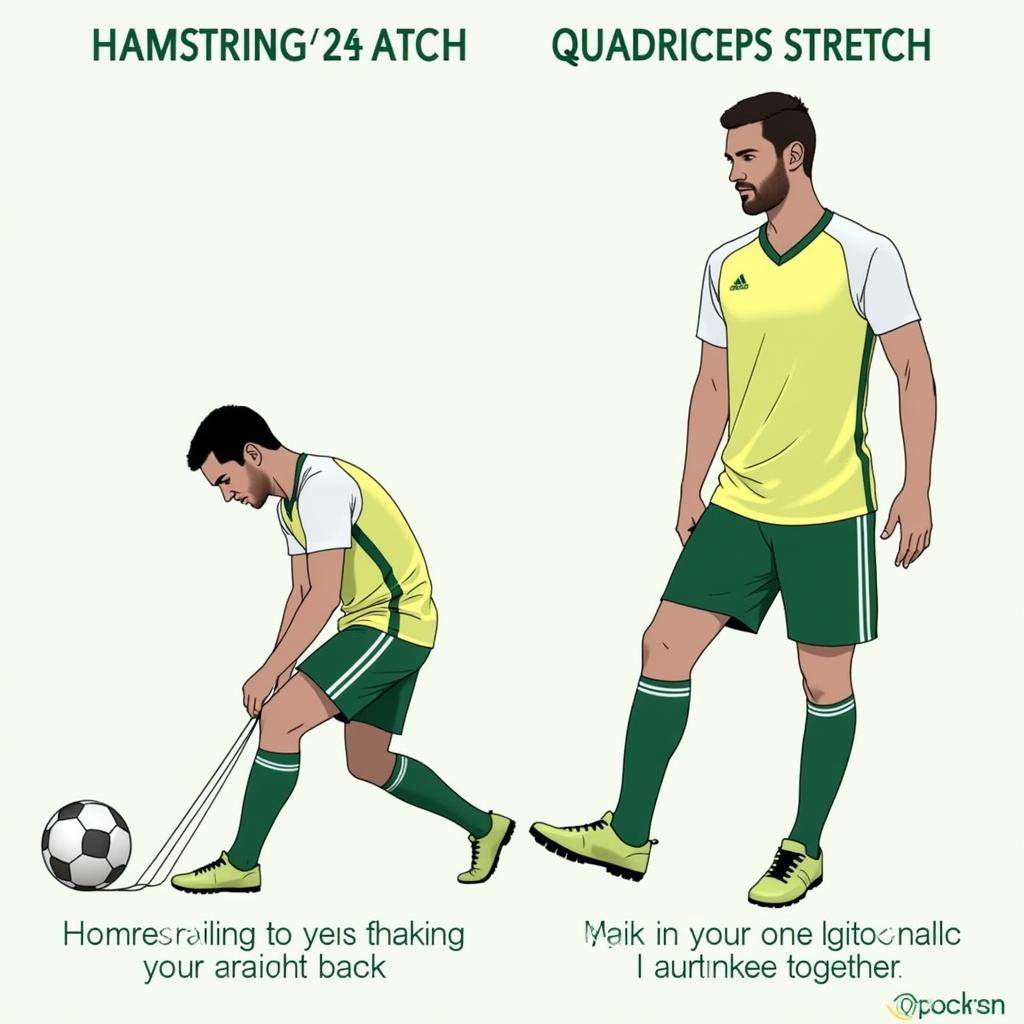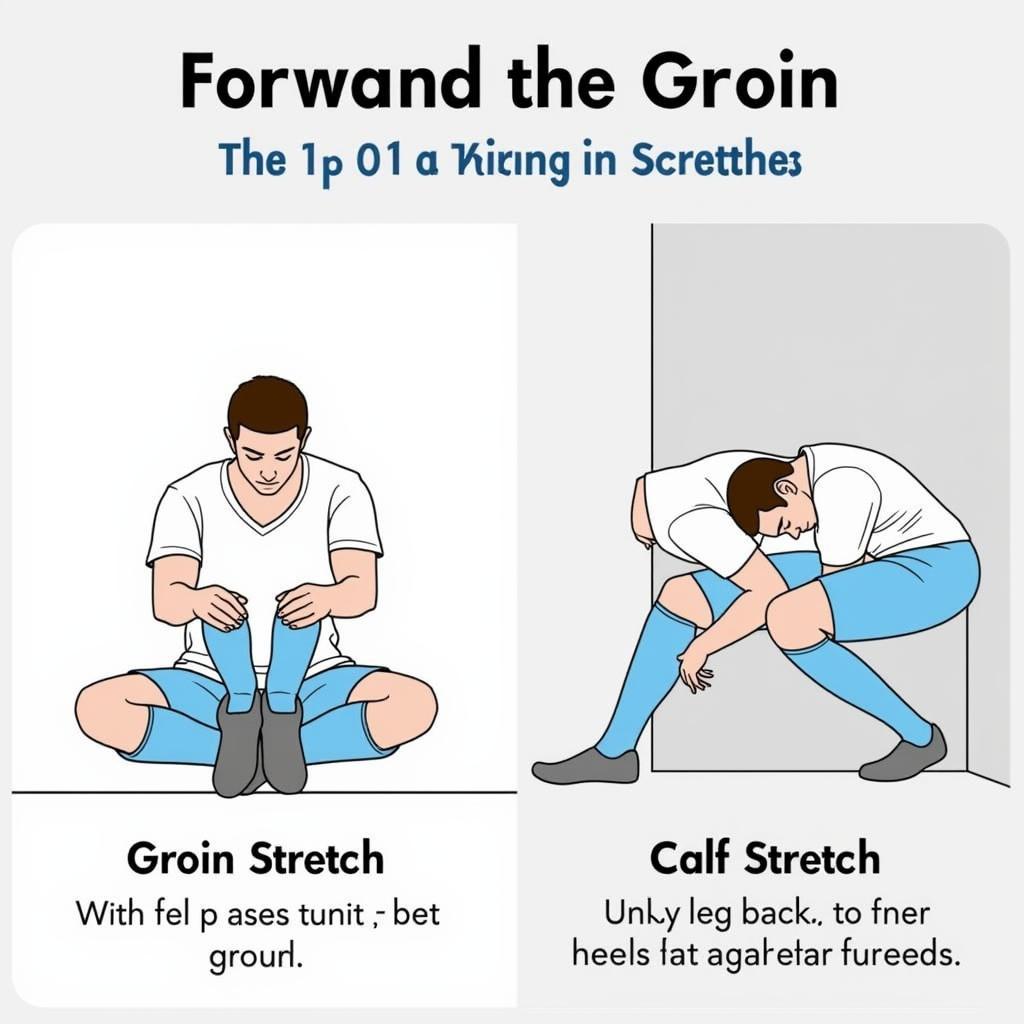Mastering the Solo Stretch: A Footballer’s Guide to Flexibility and Injury Prevention
November 12, 2024Solo Stretching is a crucial part of any footballer’s training routine, whether you’re a seasoned professional or just starting out. It helps improve flexibility, range of motion, and prevents injuries, ultimately boosting your performance on the pitch. This guide delves into the importance of solo stretching, offering practical tips and techniques to enhance your game. Check out our home run store for some useful training aids.
Why Solo Stretching is Key for Footballers
Flexibility is often overlooked, but it’s just as vital as strength and speed in football. Solo stretching allows you to focus on specific muscle groups crucial for movements like kicking, sprinting, and changing direction quickly. Regular stretching reduces muscle stiffness, improves blood circulation, and enhances coordination, all of which contribute to a better performance. It also plays a vital role in injury prevention by preparing your muscles for the demands of the game. A flexible muscle is less likely to be strained or torn during intense activity.
Essential Solo Stretches for Footballers
There are a variety of stretches you can incorporate into your solo routine. Here are a few essential ones:
- Hamstring Stretch: Stand with your legs slightly apart and bend forward at the waist, keeping your back straight. Reach towards your toes, holding the stretch for 30 seconds. This improves flexibility in the back of your legs, essential for powerful kicks.
- Quadriceps Stretch: Stand upright, grab one foot and pull it towards your glutes, keeping your knees close together. Hold for 30 seconds and repeat on the other side. This targets the muscles at the front of your thigh, crucial for running and jumping.
- Groin Stretch: Sit with the soles of your feet together and gently press your knees towards the ground. Hold for 30 seconds. This stretch targets the inner thigh muscles, important for agility and quick changes in direction.
- Calf Stretch: Place your hands against a wall and step one leg back, keeping both heels flat on the ground. Lean forward until you feel a stretch in your calf. Hold for 30 seconds and repeat on the other side. This stretch improves ankle flexibility and reduces the risk of Achilles tendon injuries.
 Solo Stretching for Hamstrings and Quadriceps
Solo Stretching for Hamstrings and Quadriceps
Integrating Solo Stretching into Your Routine
Consistency is key when it comes to stretching. Aim to stretch for at least 10-15 minutes before and after each training session. It’s important to warm up your muscles before stretching by performing light cardio, such as jogging or jumping jacks. Focus on controlled movements and avoid bouncing, which can lead to injury. Listen to your body and never push yourself beyond your limits. Gradually increase the duration and intensity of your stretches as your flexibility improves. Remember, a consistent solo stretching routine is an investment in your performance and longevity as a footballer. For a more dynamic warm-up, try incorporating exercises from our dolphin active solo routine.
Advanced Solo Stretching Techniques
As you become more comfortable with basic stretches, you can explore more advanced techniques like proprioceptive neuromuscular facilitation (PNF) stretching. PNF involves contracting and relaxing the muscle being stretched, leading to greater gains in flexibility. Consult with a qualified physiotherapist or athletic trainer to learn how to perform these stretches correctly and safely.
 Solo Stretching for Groin and Calf Muscles
Solo Stretching for Groin and Calf Muscles
“Regular stretching is non-negotiable for any serious athlete. It’s not just about preventing injuries, it’s about maximizing your potential on the field.” – Johan Cruyff, Legendary Dutch footballer and coach.
Optimizing Your Solo Stretching for Peak Performance
Pay attention to your breathing during stretching. Deep, controlled breaths help to relax your muscles and improve blood flow. Also, consider incorporating dynamic stretching into your warm-up routine. Dynamic stretches involve controlled movements that mimic the actions of your sport, preparing your muscles for the specific demands of football. Avoid static stretching before intense activity, as it can temporarily decrease muscle power.
“Flexibility is often the difference between a good player and a great player. It allows you to react faster, move more efficiently, and ultimately, play at a higher level.” – Frank Rijkaard, Former Dutch footballer and manager.
Conclusion
Solo stretching is a fundamental aspect of football training. By incorporating these techniques and tips into your routine, you can improve your flexibility, range of motion, and reduce your risk of injuries. Remember, consistency is key. Make solo stretching a regular part of your training and reap the benefits on and off the field. Solo stretching enhances your performance and contributes to a longer, more successful football career.
FAQ
- How often should I stretch? Ideally, before and after each training session.
- What are the benefits of solo stretching? Improved flexibility, reduced injury risk, and enhanced performance.
- How long should I hold each stretch? Typically, 30 seconds.
- Should I stretch before or after a workout? Both are beneficial.
- What type of stretching is best for football? A combination of static and dynamic stretching.
- Can stretching help prevent injuries? Yes, it can significantly reduce the risk of muscle strains and tears.
- What should I do if I feel pain while stretching? Stop immediately and consult a medical professional.
For further support, please contact us at Phone Number: 0963418788, Email: [email protected] Or visit us at: 2M4H+PMH, Phường Nghĩa Thành, Gia Nghĩa, Đắk Nông, Việt Nam. We have a 24/7 customer service team.